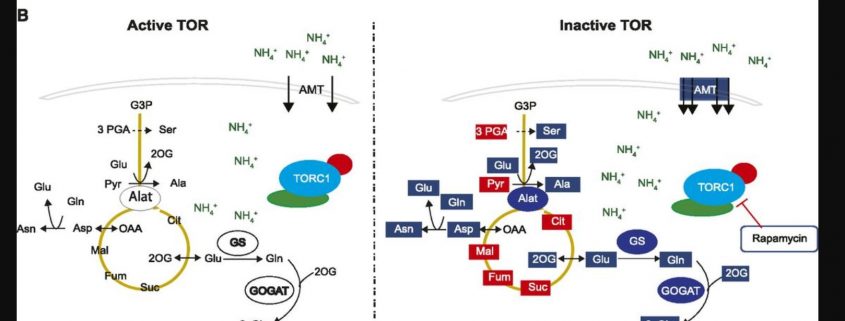Power Play in the TOR Growth Circuit
Mubeen et al. investigate cellular homeostasis related to the TOR kinase complex. Plant Cell https://doi.org/10.1105/tpc.18.00159
By Umarah Mubeen and Patrick Giavalisco, Max Planck Institute of Molecular Plant Physiology, Golm, Germany.
Background: Growth and cellular development are controlled by the allocation of essential resources like nutrients and energy. Coordination of cellular processes that consume or recycle these resources has to be tightly controlled by a network of sensors and effectors that maintain the robust nutritional and energetic state of the cell. The Target of Rapamycin (TOR) kinase complex is one of the evolutionarily conserved regulators that controls growth processes in all eukaryotic organisms. Accordingly, the activation of TOR by permissive growth conditions leads to the activation of cellular processes like protein, nucleotide, or lipid synthesis. Periods of nutritional or energetic scarcity lead to the inactivation of TOR and, hence, the activation of a cellular energy saving and nutrient recycling mode.
Question: Based on a previously described molecular phenotype, namely, the immediate increase of amino acid levels after the pharmacological or genetic inhibition of TOR in plants, we were interested to elucidate if this phenomenon is derived from the inhibition of protein synthesis or from the activation of protein degradation or completely different processes.
Findings: Surprisingly, we found, using the green algae Chlamydomonas reinhardtii as a photosynthetic model species, that the accumulation of amino acids was detectable within minutes after the pharmacological inhibition of TOR. This immediate accumulation was supported by the previously described inhibition of amino acid consuming processes like protein synthesis and also by the activation of protein degradation, but the main driver of the increase was increased nitrogen uptake and upregulated de novo amino acid synthesis. This result was unexpected since the synthesis of amino acids is not only energy demanding but also counterintuitive under TOR-off conditions, since translation will be downregulated. The molecular design behind this regulatory process might be a simple positive feed-forward loop, which aims to reactivate the TOR kinase under otherwise nutritionally plentiful conditions.
Next steps: In the following steps, it will be essential not only to determine how TOR controls the upregulation of nitrogen uptake and amino acid synthesis, but also how this nutritional stimulus will impact the function and activity of TOR and, hence, cellular homeostasis.
Umarah Mubeen, Jessica Jüppner, Jessica Alpers, Dirk K. Hincha, Patrick Giavalisco. (2018). Target of Rapamycin Inhibition in Chlamydomonas reinhardtii Triggers de Novo Amino Acid Synthesis by Enhancing Nitrogen Assimilation. Plant Cell 30: 2240-2254; DOI: https://doi.org/10.1105/tpc.18.00159
Key words: Target of rapamycin kinase, amino acid synthesis, nitrogen uptake, growth control.




